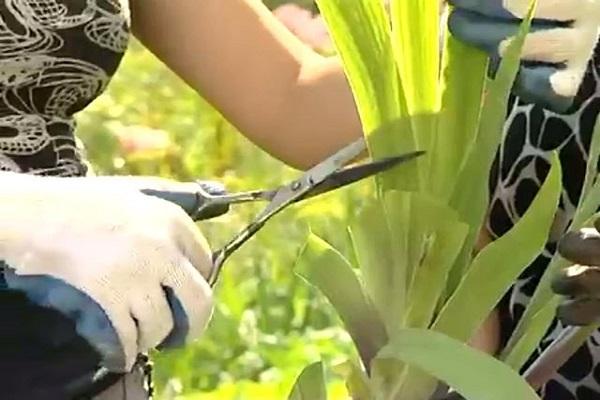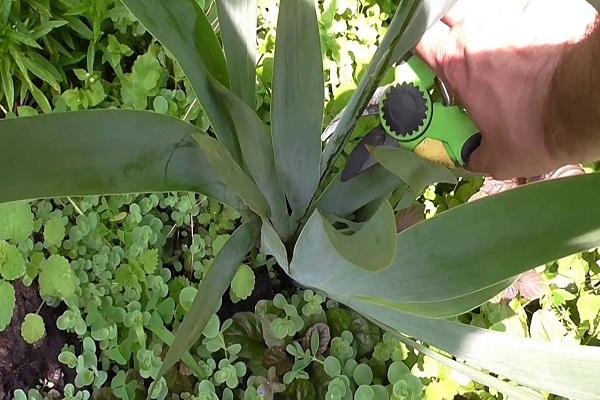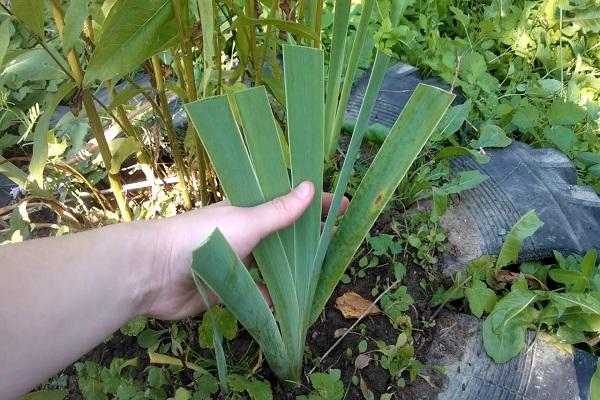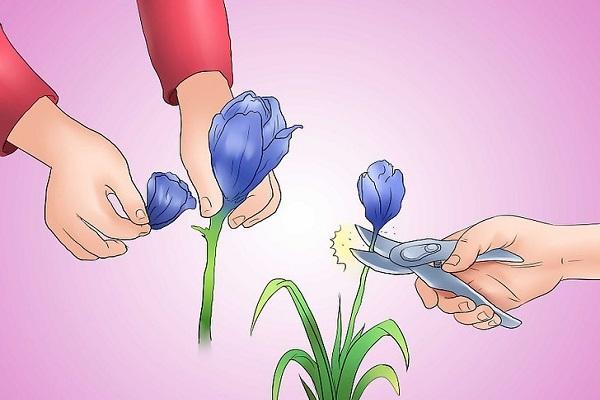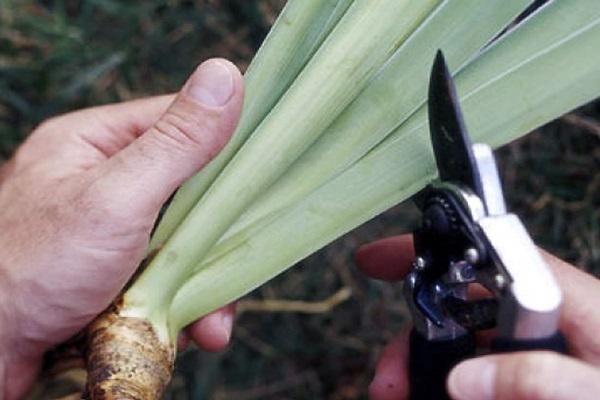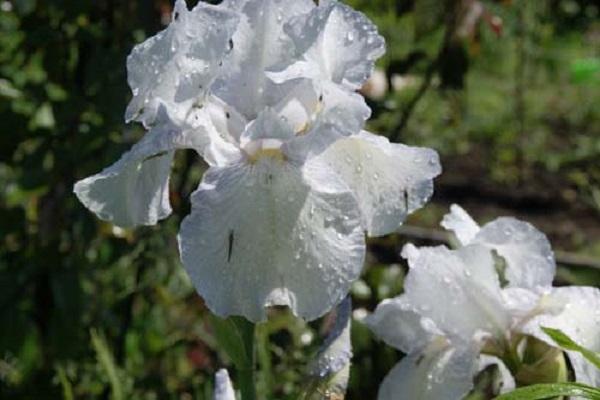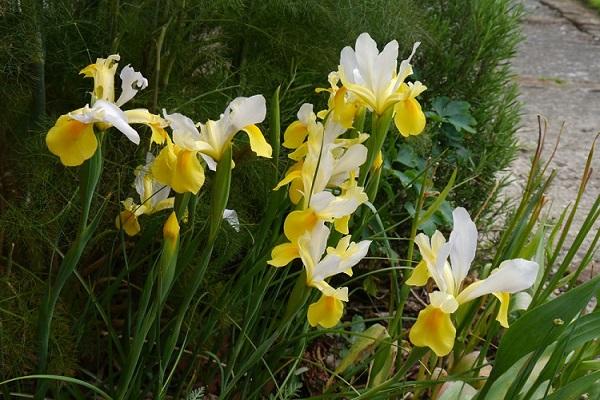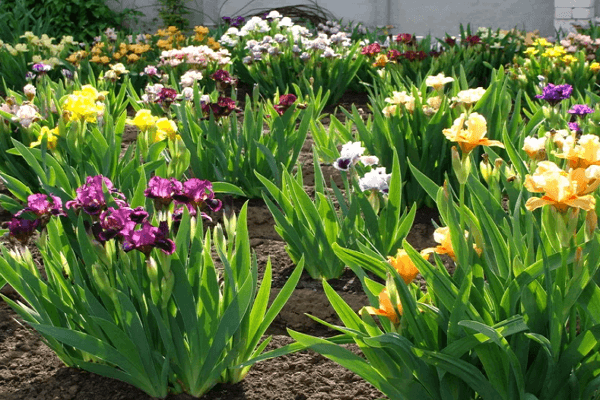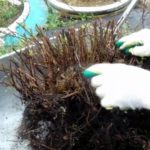In order for irises to bloom all summer, you need to know when it is best to prune them after flowering for the winter. Other tips for caring for these flowers will also come in handy. If all agrotechnical measures are carried out correctly in the fall, then the irises will safely spend the winter in open beds. Detailed instructions describing each step will help you carry out the procedure without problems. In the future, it is necessary to provide the plants with special care.
- Should irises be pruned before winter?
- When is the best time to prune?
- During flowering
- After flowering
- When transplanting
- When the seeds ripen
- Features of pruning different types of irises
- Rhizomatous
- Bulbous
- Caring for flowers after pruning: preparing for winter
- Feeding and watering
- Sheltering irises for the winter
- Features of iris shelter in different regions
- Central Russia
- Moscow region
- Leningrad region
- Siberia and the Urals
- Features of pruning some varieties
Should irises be pruned before winter?
Irises are perennial ornamental plants. Over the entire season of their growth and development, pruning is carried out several times:
- in the case when the leaves turn yellow or spots appear on them;
- after the end of the flowering period;
- before the onset of frost;
- Some varieties of irises require additional pruning.
Irises should definitely be prepared for wintering. First of all, the leaves are cut off, and then the buds. Withered flowers and dried leaves take away excess nutrients and energy, become a source of infection, and also harbor pests.
When is the best time to prune?
The pruning procedure is best done in the autumn, after the plant has completely faded and the flowers and leaves have dried. The timing largely depends on the region in which the flowers are grown. In most cases, the time coincides with mid-October.
Removal of leaves in the fall is carried out following a number of rules:
- It is better to cut the leaves in the form of a cone;
- the height of the fan of leaves after cutting should be 15 cm from the surface of the ground;
- leaves that are cut should be burned;
- the roots are sprinkled with a layer of dry soil;
- For the winter, the plant is completely covered.
The green part of the plant does not need to be removed. Green leaves continue to nourish the root system of the flower, increasing resistance to frost and other adverse factors.
During flowering
When a flower enters the active flowering phase, it is not recommended to perform any actions with it. It is better to prune only 3.5 weeks after the irises have bloomed. During this time, the plant will restore the strength that went into the formation of flower stalks.In addition, new root branches will begin to appear. The time coincides with the last days of August or the first days of September.
If there is a need to trim flowers during flowering, the procedure is carried out in compliance with some recommendations:
- remove only those buds that have already bloomed;
- it is important not to damage all unopened buds;
- After the buds wither, the stem is cut off, leaving a height of 3 cm from the root.
Attention! Do not trim leaves during active flowering days or immediately after it. Actions will harm the development of the plant, and in some cases cause its death.
After flowering
At the beginning of September, the flowering of irises completely ends. At this time, you should trim the faded flowers along with the stem and cut off the seed pods. The stems need to be cut low - about 2.5 cm above the rhizome. If they are not cut off, they begin to rot.
After trimming the flowers and stems, the leaves can be left until they turn completely yellow. In most cases, removal begins only after they have completely fallen to the ground - in mid-October. Leave a fan of cut leaves 14 cm high.
When transplanting
If you plan to transplant or propagate a flower in the summer, then it is better to cut off the foliage. Leave a fan of cut leaves 17 cm high. The procedure will preserve a sufficient amount of moisture and nutrients in the roots. As a result, the plant will take root faster in a new piece of land.
It is recommended to trim the leaves four days before transplanting. It is better to carry out the procedure itself 14 days after the end of flowering. All activities are carried out in the evening, after sunset.
When the seeds ripen
During the period of ripening of the seed capsule (ripening begins after the flower withers), iris bushes also need pruning.Cut off all dried buds. If it is necessary to propagate a flower, then leave one.
Features of pruning different types of irises
The procedure is carried out using sharp garden tools:
- Dried flowers can be plucked by hand.
- Peduncles are cut to the very base.
- The stem is cut off, leaving a height of 3.5 cm.
- Dried foliage should protrude 14 cm above the soil surface.
Irises are divided into two main types, each of which requires a different approach during care.
Rhizomatous
Rhizomatous varieties of irises undemanding to care. Yellowed and dried leaves are removed as necessary. If there are no special reasons, then autumn pruning may not be carried out.
Bulbous
Bulbous varieties of irises require more attention. They are distinguished by the presence of a rhizome in the form of a bulb. After the flowering stage is over, cut off the stems and leaves, and then dig up the bulb. The procedure is carried out carefully so as not to damage the roots.
Subsequently, the bulbs are dried and put away in a cool place, and in the fall they are planted again in flower beds. In the northern regions, it is better to plant the bulb in the spring so that it does not freeze over the winter.
Caring for flowers after pruning: preparing for winter
After completing the flowering stage, irises need to be helped to accumulate strength and microelements for a successful winter. An important point in care is the application of fertilizers.
Feeding and watering
After flowering ends, the plant in open ground does not need frequent watering. If the weather is dry, then two waterings in the fall are enough. In rainy weather there is no need for additional moisture.
The soil around each iris bush should be loosened to a depth of 2 cm and all weeds should be removed.The root branches of the plant are close to the surface of the earth, so the loosening procedure must be carried out carefully.
It is better to choose potassium-phosphorus fertilizers as a top dressing. They are applied 12 days before the pruning procedure and 14 days after. It should be remembered that fertilizers must be applied before the onset of frost.
Attention! You cannot use organic components as fertilizer, especially chicken droppings and manure. Organic matter promotes decay and increases the risk of pest attack.
Sheltering irises for the winter
In order for plants to have a successful winter, you need to take into account some rules and recommendations:
- Frost-resistant varieties do not need complete frost protection.
- If flowers were planted or transplanted this season, they must be covered with special material.
- The ground around the flowers is mulched. Peat and humus are chosen as mulch. The mulch layer should be at least 20 cm.
- The flower bed where the flowers grow can be covered with dry spruce or pine branches.
Advice. Do not mulch the ground with straw or leaves. In the spring, when the snow melts, the layer begins to rot, resulting in an increased risk of developing fungal diseases.
Features of iris shelter in different regions
The quality and thickness of the covering material will differ depending on the region in which the flowers are grown:
- Frost-resistant varieties do not need complete shelter. They tolerate low temperatures well, and it is enough to insulate only the root system. Only transplanted irises require complete insulation.
- Varieties of irises that are not frost-resistant need to be completely covered for the winter. The procedure begins in late autumn, before the onset of frost.
The soil is mulched with a thick layer of peat or spruce branches.It is undesirable to use dry leaves and sawdust. In March, a layer of mulch is moved away from each root to prevent rotting.
Central Russia
Central Russia is characterized by cold winters. In addition, there is not always enough snow falling.
Moscow region
They begin to cut off the leaves of irises 2.5 weeks before the onset of frost. To cover irises in the Moscow region, pine branches or spruce are used. As soon as the air temperature drops below -1 degree, the roots of the irises are covered with dry soil. After the ground begins to freeze, spruce branches are laid.
Leningrad region
The winter weather in the Leningrad region is characterized by sudden temperature changes, strong winds and a lack of snow. Therefore, the covering material is chosen to be dense. The soil is first mulched.
Siberia and the Urals
In cold regions, even frost-resistant flower varieties need a thick layer of mulch. The inside of the shelter must be dry, so any material is additionally covered on top with a wooden box or bucket. Fallen snow forms additional protection from the cold on the box or bucket.
Features of pruning some varieties
Certain varieties of iris should be prepared for winter in different ways:
- in rhizomatous irises, removal of dry and wilted leaves is carried out only if necessary;
- For exotic varieties of irises, foliage should be removed by half and only at the end of August;
- bulbous varieties need complete cutting of foliage and tops before winter.
If you properly care for irises and prepare them for winter in time, then in summer you can enjoy the lush and long-lasting flowering of the plant.

